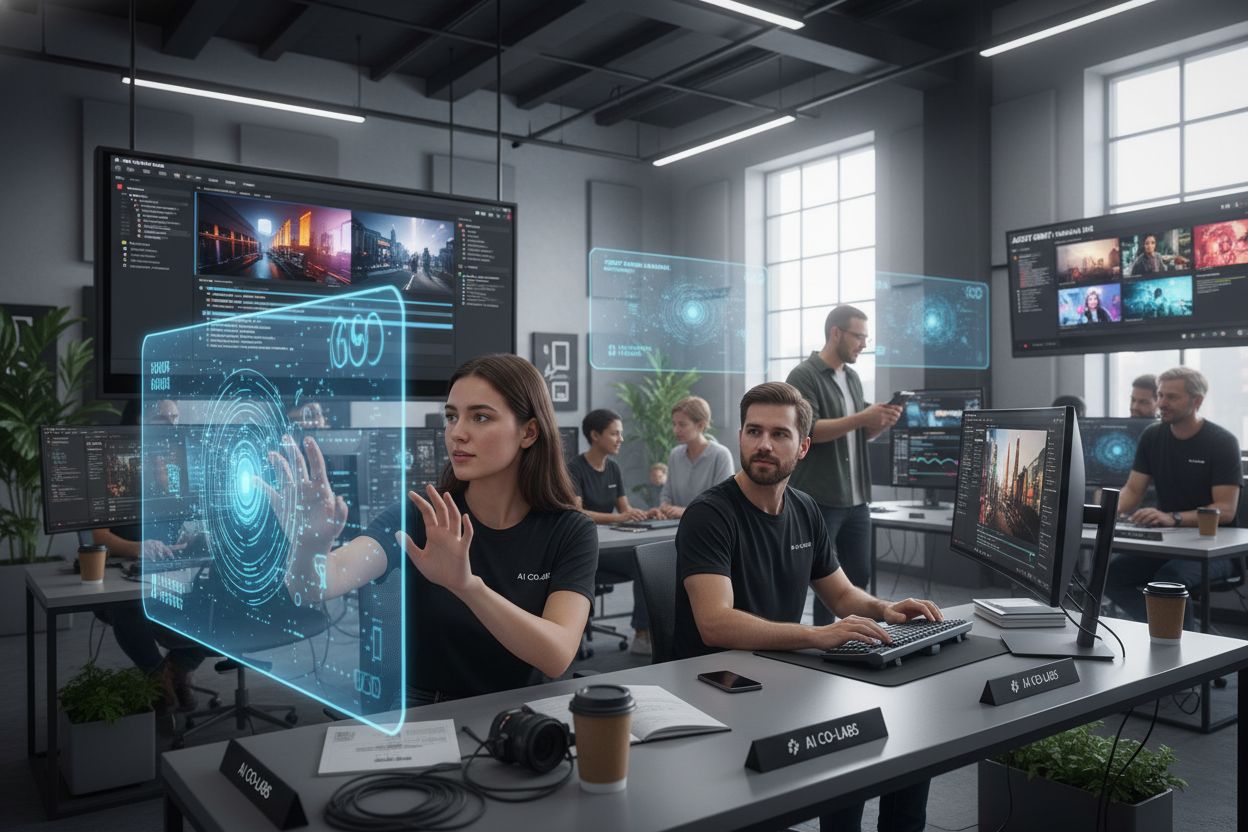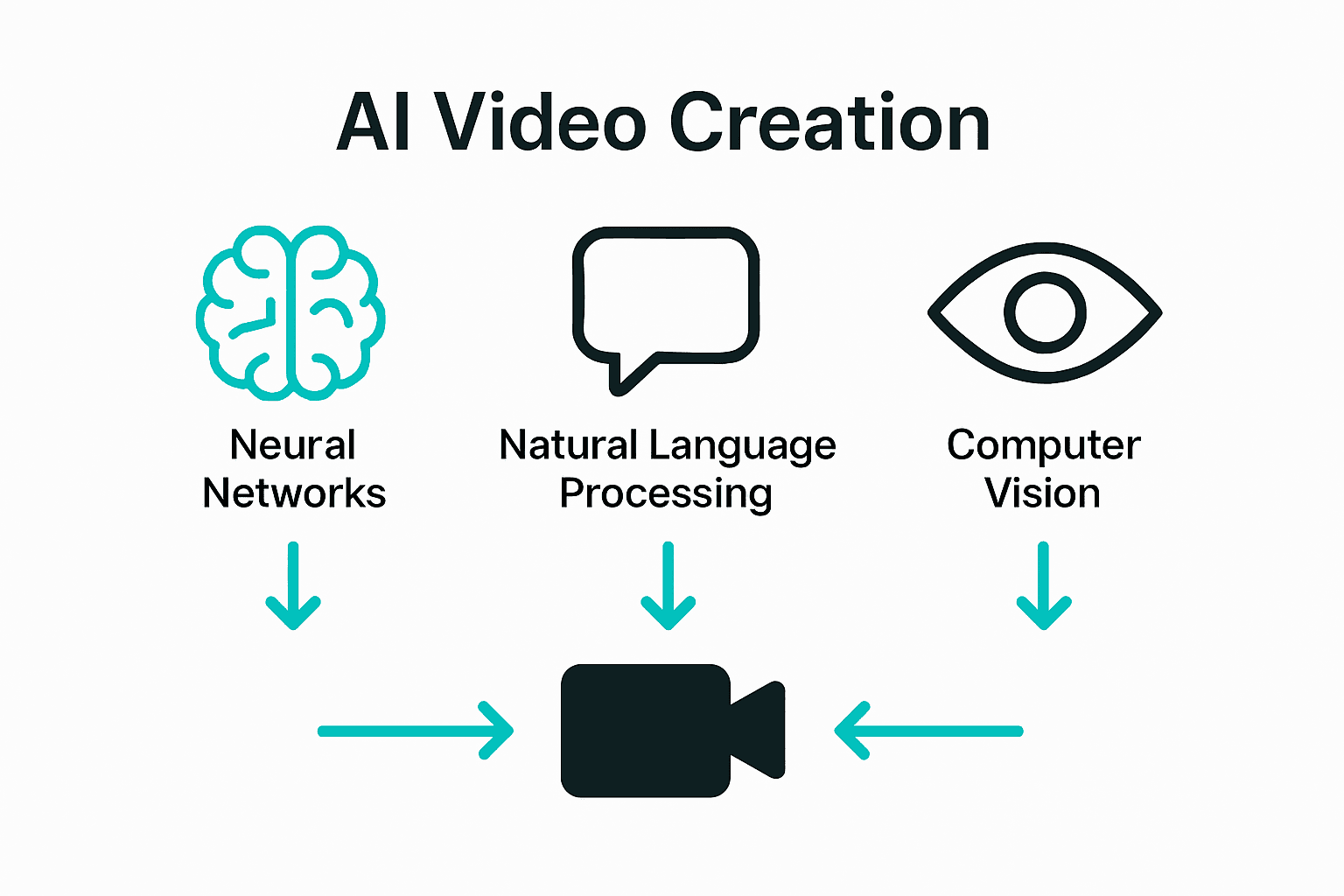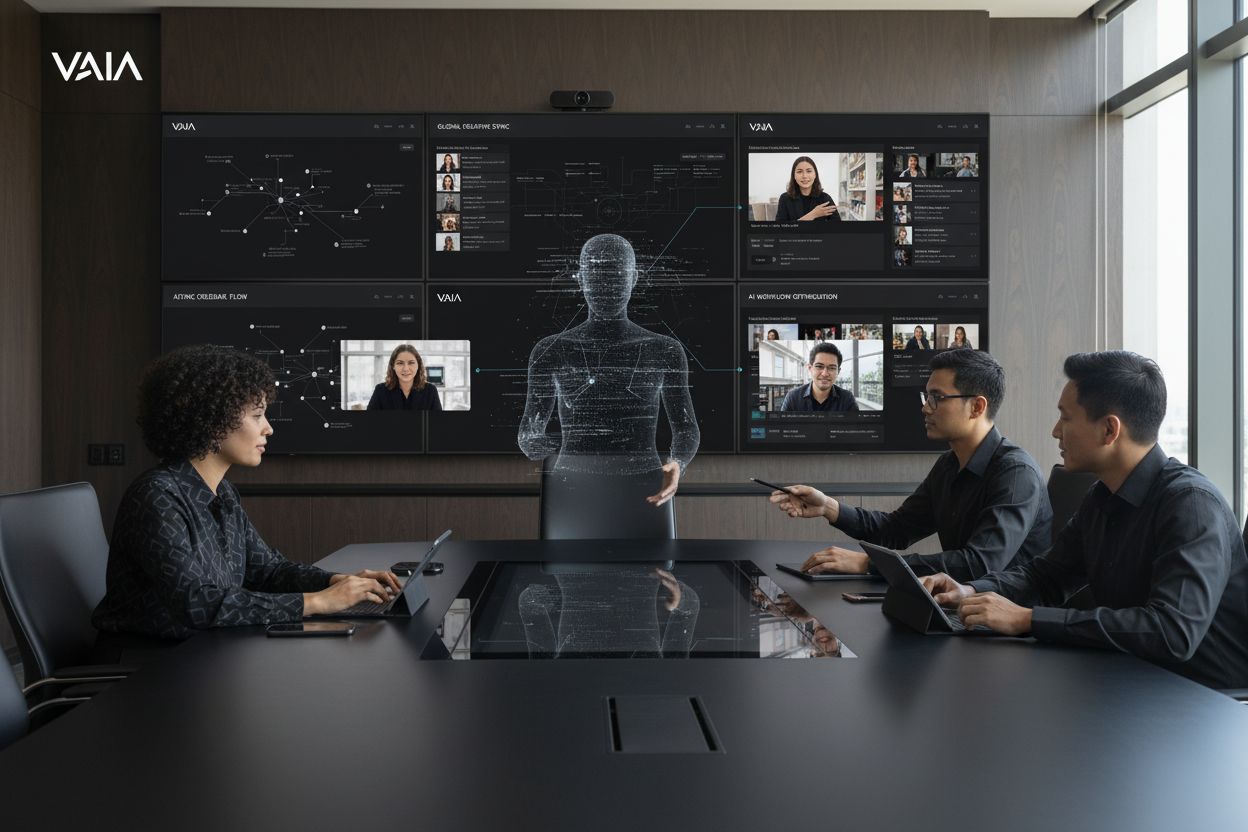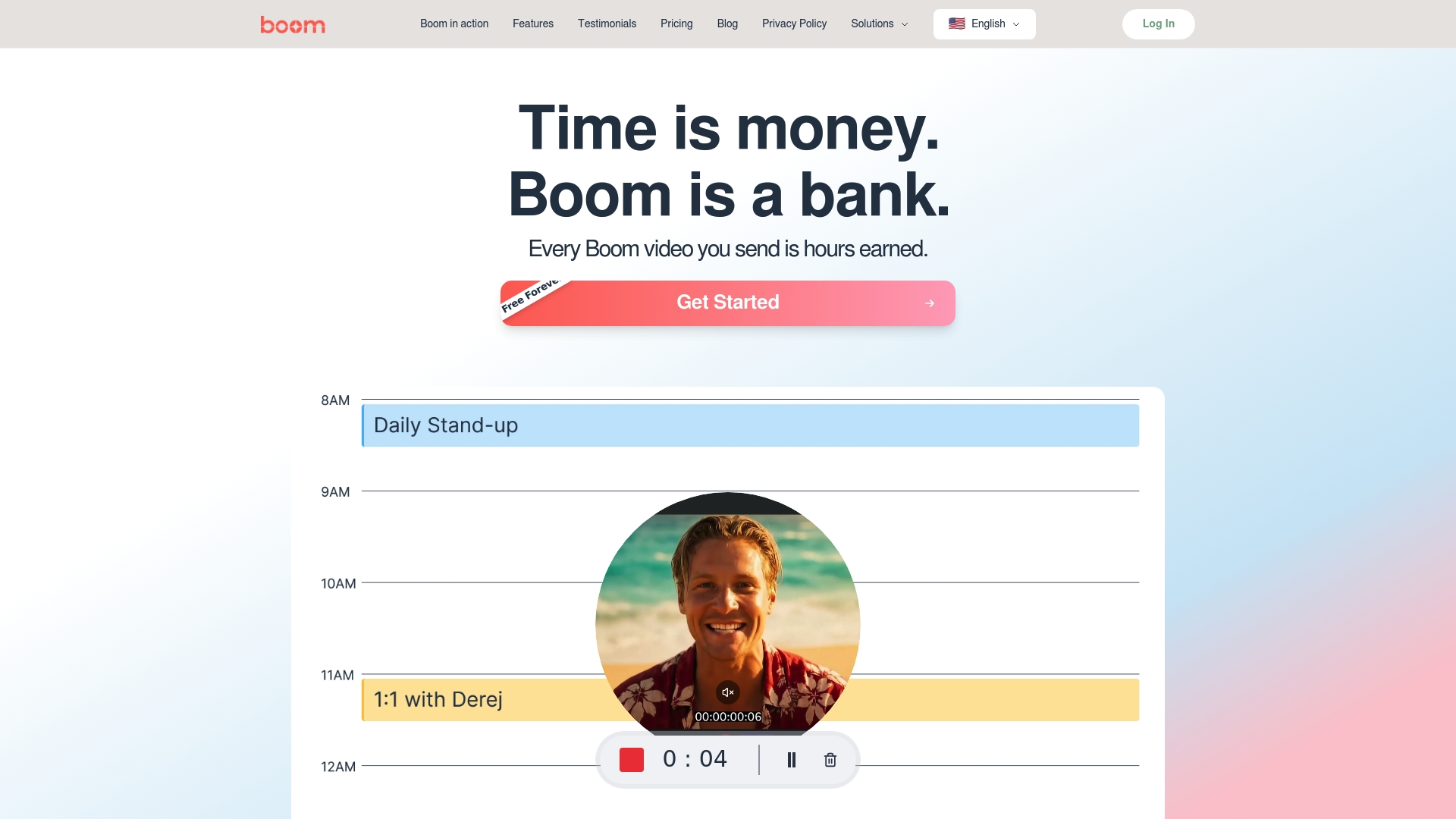Role of AI in Video Creation: Complete Guide
Discover the role of AI in video creation with this comprehensive guide covering technology types, workflow enhancements, async collaboration, and risks.
Aditya
Author
Role of AI in Video Creation: Complete Guide

Did you know that AI-powered video tools can cut production time by up to 90 percent? The rise of artificial intelligence is reshaping how creators bring ideas to life on screen. With advanced machine learning, automated editing, and smart content adaptation, creators and teams are reaching new levels of speed, quality, and personalization in video projects. This shift is making once-complex video workflows accessible to a wider range of storytellers and businesses.
Key Takeaways
| Point | Details |
|---|---|
| AI transforms video creation | AI enhances the entire video production process, from concept to execution, allowing for high-quality content generation across industries. |
| Core technologies empower AI tools | Key technologies such as neural networks, machine learning, and natural language processing enable sophisticated video synthesis and adaptation. |
| Async video workflows enhance collaboration | Asynchronous creation allows global collaboration, reduces production timelines, and fosters creative flexibility without synchronous interaction. |
| Ethical considerations are critical | As AI video generation evolves, it raises significant ethical concerns, including data privacy and potential job displacement, necessitating responsible governance. |
Table of Contents
Defining AI's Role in Video Creation
- Defining AI's Role In Video Creation
- Core Technologies Powering AI Video Tools
- Async Video Creation: Workflow Revolutionized
- Key Benefits For Teams And Creators
- Risks, Limitations, And Ethical Considerations
Artificial Intelligence (AI) has revolutionized video creation by transforming how content is conceptualized, generated, and refined. At its core, AI video generation represents a sophisticated technological process where machine learning algorithms synthesize dynamic visual content from diverse inputs like text descriptions, images, and audio signals. According to research from understanding the role of AI in content creation, these systems can now produce high-quality videos across multiple domains.
The experimental research indicates remarkable capabilities in AI video generation. A study published in ArXiv reveals that AI-generated synthetic educational videos can be as effective as traditionally produced instructor videos in content delivery and learner engagement. Key capabilities of AI in video creation include:
- Automated script generation
- Intelligent visual asset selection
- Voice and speech synthesis
- Real-time video editing
- Personalized content adaptation
Moreover, AI's role extends beyond mere content generation. Modern AI video technologies leverage advanced machine learning models to understand context, predict viewer preferences, and create highly targeted visual narratives. By analyzing vast datasets, these systems can generate videos that are not just technically proficient but emotionally resonant and contextually relevant.
The future of video creation lies in this symbiotic relationship between human creativity and AI's computational power. As algorithms become more sophisticated, we can expect AI to become an increasingly collaborative partner in visual storytelling, enabling creators to push the boundaries of what's possible in video production.
Core Technologies Powering AI Video Tools
Artificial Intelligence video generation relies on a complex ecosystem of advanced technological frameworks that transform how visual content is created. According to research examining text-to-video generation models, these technologies leverage sophisticated deep learning architectures and natural language processing techniques to synthesize dynamic visual narratives. Understanding productivity with AI video technology highlights the intricate computational processes behind these innovative tools.
The core technological components powering AI video tools include:
Here's a comparison of core technologies powering AI video tools:
| Technology Component | Key Function | Example Application |
|---|---|---|
| Neural Networks (GANs, Transformers) | Image synthesis<br>Motion generation | Dynamic scene creation |
| Machine Learning Algorithms | Content generation<br>Model training | Automated editing |
| Natural Language Processing | Context understanding<br>Semantic analysis | Text-to-video conversion |
| Computer Vision | Image recognition<br>Object detection | Asset selection<br>Scene analysis |
| Data Preprocessing | Data refinement<br>Model tuning | Enhanced video quality |
- Neural Network Architectures: Generative adversarial networks (GANs) and transformer models
- Machine Learning Algorithms: Deep learning frameworks for content generation
- Natural Language Processing: Advanced semantic understanding and context interpretation
- Computer Vision Technologies: Image recognition and synthesis capabilities
- Data Preprocessing Techniques: Advanced algorithms for training and refining video generation models
Research from ArXiv reveals that modern AI video generation involves complex interactions between multiple technological components. These systems utilize advanced neural networks that can interpret textual descriptions, understand contextual nuances, and translate abstract concepts into visually coherent narratives. The computational power enables precise image synthesis, seamless motion generation, and intelligent content adaptation.
As AI technologies continue evolving, the future of video creation promises increasingly sophisticated tools that blur the lines between human creativity and machine intelligence. The ongoing development of more advanced neural networks and machine learning algorithms suggests we are approaching an era where AI will not just assist but actively collaborate in visual storytelling and content generation.

Async Video Creation: Workflow Revolutionized
Asynchronous video creation represents a paradigm shift in digital content production, fundamentally transforming how professionals collaborate and communicate. Recent research highlights how AI technologies are dramatically streamlining media workflows, enabling creators to generate sophisticated video content without traditional time and location constraints. Top async video features for freelancers illustrates the transformative potential of these emerging technologies.
The key advantages of async video creation include:
- Elimination of scheduling conflicts
- Global collaboration across time zones
- Reduced production time and costs
- Enhanced creative flexibility
- Personalized content generation
According to research from Google's Veo models, text-to-video generation now supports synchronized audio and scene extensions, allowing creators to generate and expand video content dynamically. This technological breakthrough means teams can produce high-quality visual narratives without synchronous interaction, breaking traditional production bottlenecks.

However, the research also cautions about potential creative homogenization. While AI streamlines digital media production, human oversight remains critical to maintain unique narrative voices and prevent algorithmic content uniformity. The future of async video creation lies in striking a delicate balance between technological efficiency and human creative intuition—a collaborative approach where AI augments rather than replaces human creativity.
Key Benefits for Teams and Creators
Artificial Intelligence is reshaping video creation, offering unprecedented advantages for teams and individual creators across various industries. 7 types of video content for teams to boost collaboration highlights the transformative potential of AI-driven video technologies. Research demonstrates that these innovations are dramatically democratizing media production, enabling more efficient and accessible content creation.
The key benefits for teams and creators include:
- Dramatically reduced production time
- Significant cost savings in video creation
- Enhanced creative exploration and experimentation
- Personalized content generation
- Global accessibility and scalability
- Adaptive learning and instructional design support
According to systematic literature reviews, AI-generated instructional videos serve as powerful auxiliary learning tools, offering personalized and engaging content that supports complex instructional design processes. The technology enables creators to generate high-quality videos with minimal technical expertise, breaking down traditional barriers to professional-grade media production.
Moreover, AI video technologies are not just about efficiency—they represent a fundamental shift in creative expression. By automating technical aspects of video creation, these tools free creators to focus on storytelling, conceptual innovation, and emotional resonance. The future of video creation lies in this collaborative ecosystem where AI augments human creativity, making sophisticated visual communication more accessible and impactful than ever before.
Risks, Limitations, and Ethical Considerations
Artificial Intelligence in video creation presents a complex landscape of technological potential and ethical challenges. While AI offers remarkable capabilities, researchers have identified critical risks that demand careful consideration and proactive management. Understanding why video for product teams matters underscores the importance of navigating these emerging technological frontiers responsibly.
Key risks and ethical concerns in AI video generation include:
- Potential for deepfake misuse
- Algorithmic bias and fairness issues
- Data privacy and consent challenges
- Quality and authenticity verification
- Intellectual property complexities
- Potential job displacement in creative industries
Research highlights persistent technical limitations in AI video generation, particularly around deepfake detection and algorithmic transparency. These challenges extend beyond technical constraints, touching on fundamental societal and ethical questions about content authenticity, representation, and the boundaries of machine-generated creativity.
The ethical implications are profound. As AI technologies become more sophisticated, they raise critical questions about consent, representation, and the potential for manipulation. While these tools offer unprecedented creative possibilities, they simultaneously demand robust governance frameworks, transparent development practices, and ongoing dialogue about the societal impacts of increasingly powerful generative technologies. The future of AI video creation will ultimately depend on our collective ability to balance technological innovation with responsible, human-centered ethical standards.
Turn AI Video Creation Challenges Into Your Competitive Edge
Are you tired of the endless hours lost to editing, scheduling, and repetitive meetings? The article explores how artificial intelligence is reshaping video creation but also notes the setbacks many teams face, like creative bottlenecks, high production costs, and the risk of creative homogenization. Traditional tools can leave you stuck, wasting time on details instead of delivering bold ideas.

With Boom, you unlock async video creation made for today’s remote world. Capture your voice, let AI perfect your message, and brand every video seamlessly without ever setting a meeting. Boom brings the power of advanced AI, auto-scripting, instant dubbing, and async collaboration—so you create on your own terms, faster and smarter. See how creators and teams are reclaiming their time on the Boom homepage. Stop falling behind and make every minute count. Try Boom free and feel the difference now.
Frequently Asked Questions
What are the main capabilities of AI in video creation?
AI in video creation includes automated script generation, intelligent visual asset selection, voice and speech synthesis, real-time video editing, and personalized content adaptation. These capabilities revolutionize how videos are produced and tailored for audiences.
How does asynchronous video creation benefit teams?
Asynchronous video creation allows teams to collaborate globally without concerns for scheduling conflicts and time zones. It also reduces production time and costs, enhances creative flexibility, and allows for personalized content generation.
What are the risks associated with AI video generation?
Key risks of AI video generation include potential deepfake misuse, algorithmic bias, data privacy challenges, quality verification issues, intellectual property complexities, and job displacement in creative industries. These concerns necessitate careful ethical considerations in the development of AI technologies.
How does AI enhance the creative process in video production?
AI enhances creativity by automating technical aspects of video creation, thereby allowing creators to focus more on storytelling and emotional resonance. This collaboration between AI and human creativity opens up new avenues for innovative visual communication.
Recommended
About the Author
Aditya
Software Engineer.
